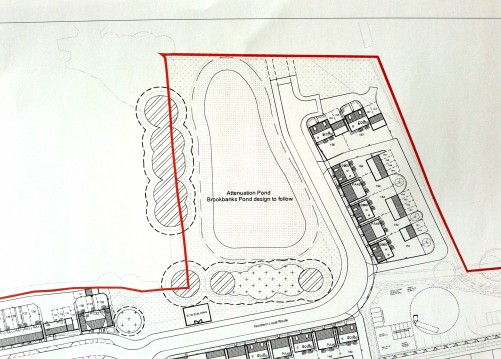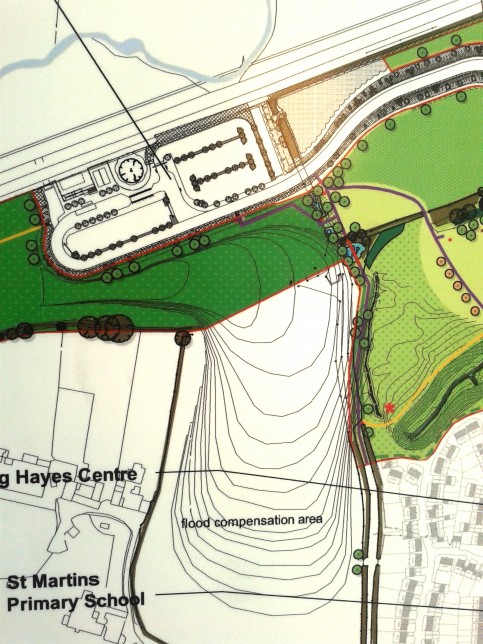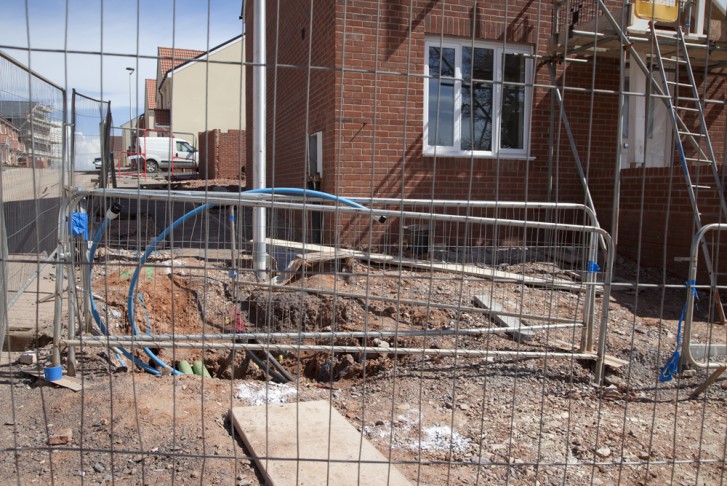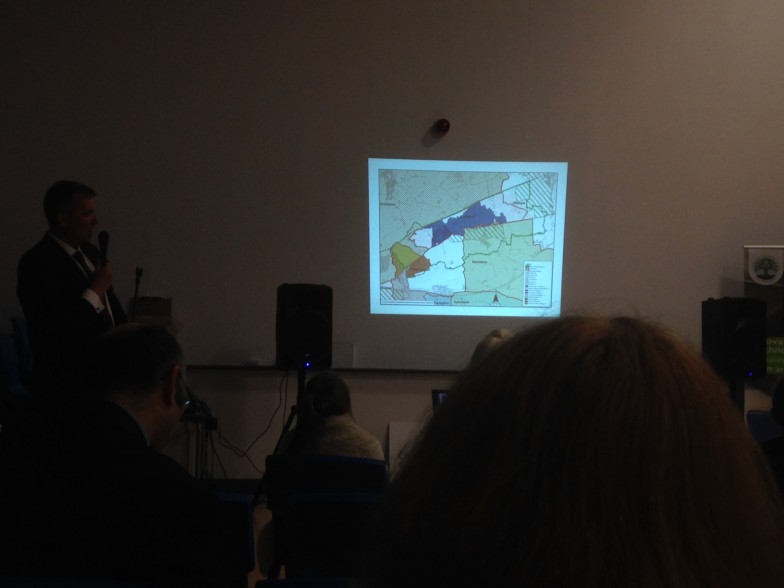England has changed. These days it's difficult to tell who's from around here and who's not. Who belongs and who's a stranger. It's disturbing. It doesn't feel right. Three months ago, in early June, I moved out here to this new development of Stoneleigh. None of the old villagers seem comfortable with the term 'new developement'. They simply call Stoneleigh the 'new houses on the hill'.
Caryl Phillips, A Distant Shore, 2004
>>Plotlands
Click this for more info!
DISPOSITION
From Keller Easterling: Extrastatecraft: The Power of Infrastructure Space, 2014
p.91-93
Disposition is an extra diagnostic tool for assessing undisclosed capacity or political bearing in infrastructure space.
A contemplation of disposition also summons Michel Foucault's theories about a social and political "apparatus" or "system of relations" that he called 'dispositif'. For Foucault a 'dispositif' was a "a thoroughly heterogeneous ensemble consisting of discourses, institutions, architectural forms, regulatory decisions, laws, administrative measures, scientific statements, philosophical, moral and philanthropic propositions - in short, THE SAID AS MUCH AS THE UNSAID. [MK capitals]
The designer of disposition in infrastructure space is a performer. Active form supplements the aesthetics of object form while addressing THE POLITICS OF DISCREPANCY in extrastatecraft. [MK capitals]
Just as the powers that be in infrastructure space are usually offering persuasive stories that are decoupled from what their organizations are actually doing, performers are accustomed to the idea that action is a carrier of information that may be discrepant from the stated text.
The action, not to be confused with movement or choreography, is the real carrier of information, meaning, and change, and it may be entirely disconnected from the text.
This could be interesting to use as a bases for exploration of THE POLITICS OF DISCREPANCY through workshops with actors/performers in devising and developing a script...
Fred Moten//Refusing Subjectivities via Herman Melville's Judge-uncle
“Promoting the use of land for housing has been Hallam's largest area of work and we have obtained many planning permissions for residential development in all our operating areas.
The Government's intention to transfer some of the enhanced value of land with planning permission for the direct benefit of the community through Affordable Housing conditions, S106 (S75 in Scotland) Agreements and the Community Infrastructure Levy, are very complex matters that need to be resolved.
Today, all of these issues impact on a scheme's overall viability, which is a matter previously unheard of but which in today's circumstances must be understood and dealt with.
Understanding and being able to negotiate all of these difficult hurdles is one of our main strengths and has led to many successful planning permissions being granted.”
The installation of ... a Community Hall ... commenced in 2011.
Our role is to promote and develop land opportunities through the complexities of the UK Town and Planning system. Hallam's strategic land and promotion expertise serves to work with the local planning authorities in helping landowners who are seeking to develop or promote land through the system. The complexity and costs of promoting sites through the planning process continue to increase. The risks and uncertainties are also increasing and so it is more important than ever that landowners select partners to assist in promoting their land with extreme care.
From Cranbrook Town Council
MINUTES
Committee: Amenities Committee
Date: Monday, 21 March 2016
Time: 7:00pm
Venue: Younghayes Centre
A/16/17 URGENT ITEM – RECENT ISSUES WITH HEDGEROW MANAGEMENT
The Chair introduced this urgent item relating to the recent issues with hedgerow management. There
was concern about the way recent works had been carried out, in particular about health & safety
issues and the lack of notice provided. The Chair advised she had been told the flailing had now
ended, that a different method would be used next time and that rutted verges would be reinstated.
It was felt that tractors with flailing gear, whilst suitable in rural roads, were unsuitable in a residential
area. There was discussion about the importance of compaction to verges being properly remediated,
rather than dips being simply filled and reseeded. Although the contractor had declined to share a
copy of their risk assessment as Cranbrook Town Council had not commissioned the work, in view of
concerns for the safety of residents exposed to flailing arms, large tractors and splintering branches, it
was resolved that the Council write to the Consortium requesting robust answers to the
aforementioned concerns and a clear summary of what had been learned from the recent works.
[note: leave spacing as is :]















NORMATIVITY
NORMATIVITY
Fred Moten -> 1:04 >>>
'To demand that an image or thing convoy people problems, that's a lot to ask of an image or a thing. '
Darby English essay - 'Good Fences' in 'Take it or leave it: institution, image, ideology'
Ellegood, Anne, author; Burton, Johanna, author; Hammer Museum
http://journal.media-culture.org.au/0512/03-shouse.php
Feeling, Emotion, Affect by Eric Shouse
"Consider the operation of an opaque, unquantified “shadow” market in which housing developers take legal options to buy land at a subsequent date. Late in 2014, the Lyons Housing Commission – headed by the former BBC Trust chair, Sir Michael Lyons – warned that an artificial scarcity of land is distorting the housing market, limiting building and “incentivising the acquisition of land”. It spoke of just six firms of land agents holding strategic land banks of 23,000 acres – enough for 400,000 homes at current building densities. It expressed particular concern that “non-developers” were holding on to land either under an option agreement or with planning permission … “speculating on future land values”. And it called for the Land Registry to open up information on ownership for public scrutiny, in a similar way to property price transactions."
(Click for link)
(Lyons Housing Commission Report link)
HOUSING AND PLANNING ACT 2016
...Local planning:
The key issue addressed by the Housing & Planning Act here is “permission in principle” (“PIP”) for housing-led development which will provide developers with greater certainty of consent at an earlier stage in the development cycle. The term “housing-led” development is a little vague but appears to include those developments where there is retail / commercial / etc uses as long as the development’s key component is housing.
PIP will be granted either on the adoption of a “qualifying document” (e.g. a development plan document or a neighbourhood development plan) or on application to a local planning authority.
The intention of PIP is to speed up the planning process by granting automatic permission (subject to various technical details (such as location, uses, etc) for homes which are on a local planning authority’s register (which they are required to keep under s151 of the HPA).
Whilst no express mention is made of brownfield sites, it appears that this measure is aimed to regeneration the use of brownfield sites to help meet the ever-growing demand for housing. The PIP provisions will not commence until 13 July 2016 (being 2 months after the date of Royal Assent).
(link)
Developers especially value certainty. They need to know
and trust the plan they are delivering. They need to know
that if they propose something that delivers this plan that
it will be given planning permission without fuss or delay.
Because Cranbrook is so big there will inevitably be more
than one developer involved. All developers need the
certainty that what they build forms part of the same vision
and plan for Cranbrook. They need to be confident that all
parts work together for mutual benefit and that what they
build now will improve their ability to sell in the future.
FROM ISSUES AND OPTIONS/CRANBROOK DPD, 2016
Devon Watch:
21 June 2016